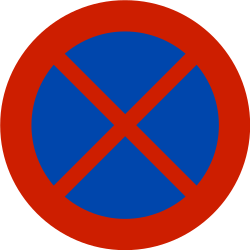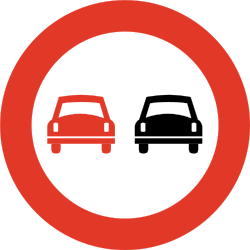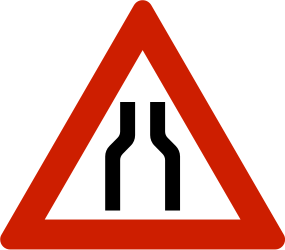We spent just over two weeks in west-central Norway in June 2022. We rented an Audio E-tron and drove all over the place. Here are a few things I noticed while driving in Norway.
Driver’s License
Some European countries require an international license. From what I can tell, international licenses are basically a scam to make people spend more money. Norway does not require an international license. If you have a driver’s license from the US, you’ll be fine. Make sure you bring it, though, as they will want to see it.
Rental Car Insurance
I was a bit confused about rental car insurance. Norway requires minimum rental car insurance, which is built into the price of your rental. I wasn’t 100% clear on what that included. But I had an ace up my sleeve. One of my credit cards provides insurance coverage for international car rentals when I use that credit card to pay for the rental. So, it’s up to you if you want to get rental car insurance. I didn’t, but I also had the backup coverage from my credit card.
Speed Limits
Speed limits are posted pretty regularly. They are a round sign with a number in a red circle, like this:

I didn’t see a lot of information on speed limits prior to driving in Norway, so I followed the lead of the locals. I followed the speed limit very closely until I got out on the road and waited to see what Norwegians did. From what I could tell, Norwegians are similar to Americans when it comes to speed limits – when you’re on a road with a speed limit of 60 or 70 kilometers per hour, that means you can go 5 to 10 kph above that, within reason. At lower speeds, people tended to follow the speed limit much more closely, particularly in cities or driving through towns. When you’re on rural roads, Norwegians go above the speed limit pretty regularly. (NOTE: The crossed-out signs mean the speed limit zone ends there.) Also, please recognize that this is not me encouraging anyone to speed. I’m just noting my observations from driving in Norway.
Once I left Bergen and was driving through less-populated areas, the most common speed limits were 60 and 70; 80 was rare. I did drive through one location with a speed limit of 90 kph, but that was very rare.
I didn’t once see a police officer pull anyone over for speeding, but I also only saw two cars in the two weeks I was on Norwegian roads driving way, way over the speed limit. It’s kind of hard to go super fast in Norway as there really are very few straight roads; the roads curve and go up and down a lot in line with the landscape. The straightest roads are often tunnels.
There are some areas that have speed limit cameras. I don’t know all the details on these, but they are always well-marked and you are given a warning with a sign that looks like this:

I’m assuming if the speed cameras catch you going quite a bit over the speed limit that will result in a ticket. They have the technology throughout Norway to read and track license plates. So, don’t speed here at all.
Traffic Signs
There are some other signs that are really important that I saw a lot in Bergen. The first is a circle with a single line through it:

Sometimes the circle with the line is alone; other times it is part of a “Sone” (i.e., Zone) like the image above. This means “NO PARKING.”
Some circles have two lines that make an X, like this:

These signs mean “NO STOPPING OR PARKING.” I saw these in various places around Bergen where stopping or parking would block traffic.
The last one I’ll note is this one:

It took me a bit to figure this one out but it means “NO PASSING.”
Also, Norway is not big on “STOP” signs. We saw a few, but in most of the places where you would expect a STOP sign there is a YIELD sign instead. I actually really liked this as it meant drivers could evaluate how busy an intersection was and then respond accordingly. I would regularly drive up to a yield sign, see no other cars, and do what we call a “rolling stop” here in the US, which involves slowing substantially but continuing to move into the intersection. In Norway, that is expected.
Here’s a link to what most signs mean in Norway.
Road Types
There are a variety of road types in Norway, but they don’t really distinguish between them that clearly. I’m guessing that the road system in Norway was one of the most expensive to build in the world as there are lots of tunnels and bridges, given how mountainous the country is and that so much of it is right on the ocean. As a result, there are no massive freeways with 5 lanes going in each direction. The largest number of lanes I saw was 4 in each direction and that was on a very short stretch of road going into Bergen that was maybe a couple of miles long. The biggest freeways have two lanes on each side, but many are just two-way roads. Where we spent a lot of our time, near Stranda and Sykkelven, there are some bigger roads that have an “E” designation (e.g., E39 or E15). These tend to be bigger than other roads.
However, even those E-designated roads can drop down to one-lane roads at times, particularly with small bridges or when the terrain is really challenging. How you know is whether there is a yellow line separating the lanes. Typical two-way roads in Norway will always have white lines on the outside marking the edges of the road. Better roads with two clearly marked lanes have a yellow line in the middle. If the yellow line disappears, be prepared to slow or stop as you negotiate cars coming from the opposite direction. When that line disappears, there is often this sign as well indicating the road narrows:

Sometimes, the roads are still wide enough without the yellow line that you can pass comfortably. But sometimes the roads will drop down to the width of just a single car and you’ll need to negotiate passing oncoming traffic. I found that this was less common on the E-designated roads, but is pretty common on other roads.
Finally, the typical yellow line has long dashes with small spaces between them. I don’t know for certain, but I think passing is allowed on such a road but with caution and only so long as there is no sign indicating no passing (see above). There are some roads that have a double yellow line. Those will indicate when passing is possible with shorter dashes on one side and a solid yellow line on the other, or vice versa.
Tolls and Ferries
When we would plot a long-distance route in our rental car or on our phones, it was pretty common to hear that the route included tolls. And, where we were, it wasn’t uncommon for the route to include ferries. I don’t actually know how much we spent on tolls and ferries (yet; still waiting for the bill), but all of this is managed with an AutoPass device in your vehicle. The toll roads detect your device and forward the cost to your rental car company. The same is true with ferries. You simply drive straight onto the ferry (wherever you are directed) and the charge goes on your AutoPass. This makes ferries super easy to manage – no credit cards or other forms of payment are required. Drive on. Drive off.
![]()
Leave a Reply